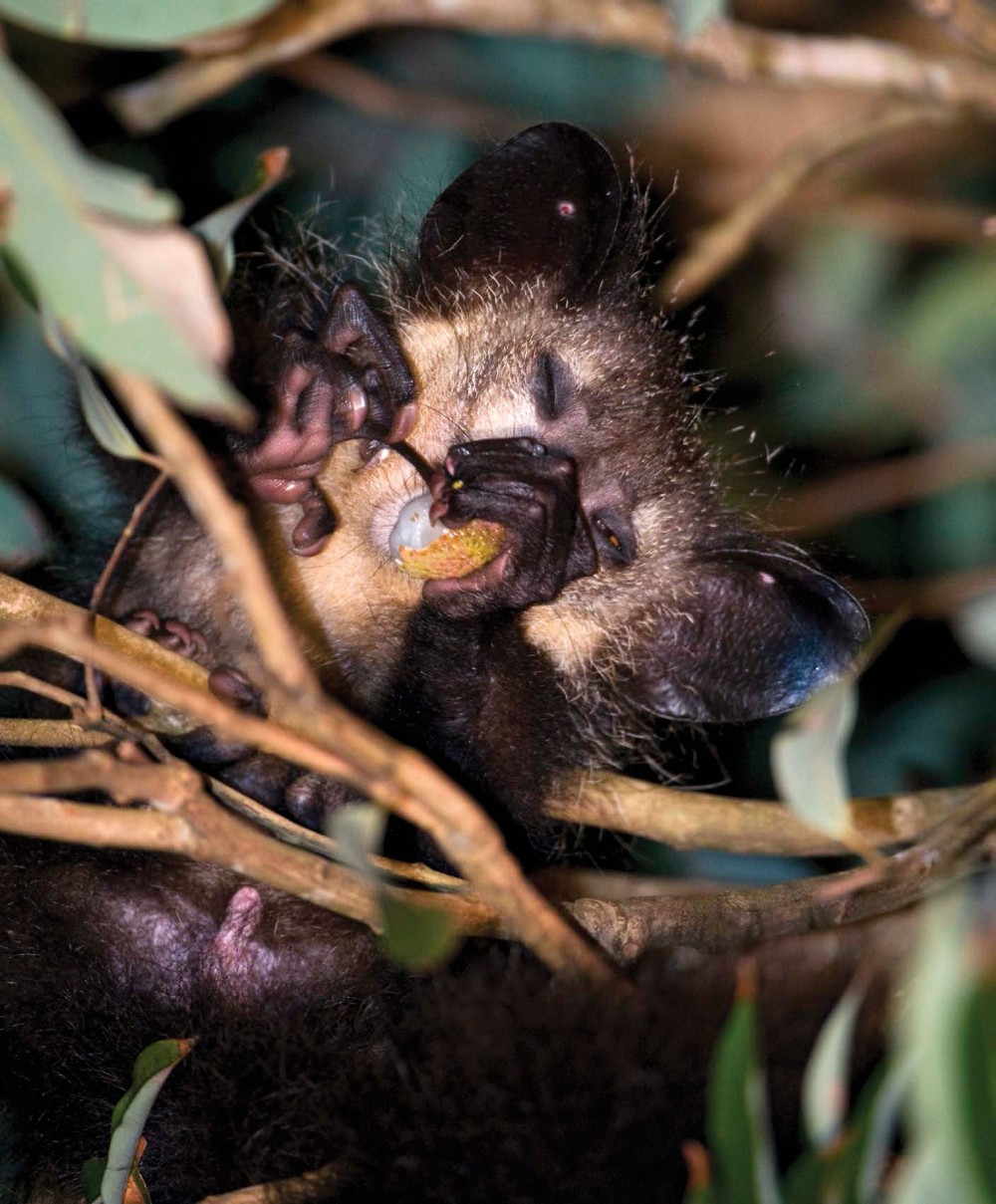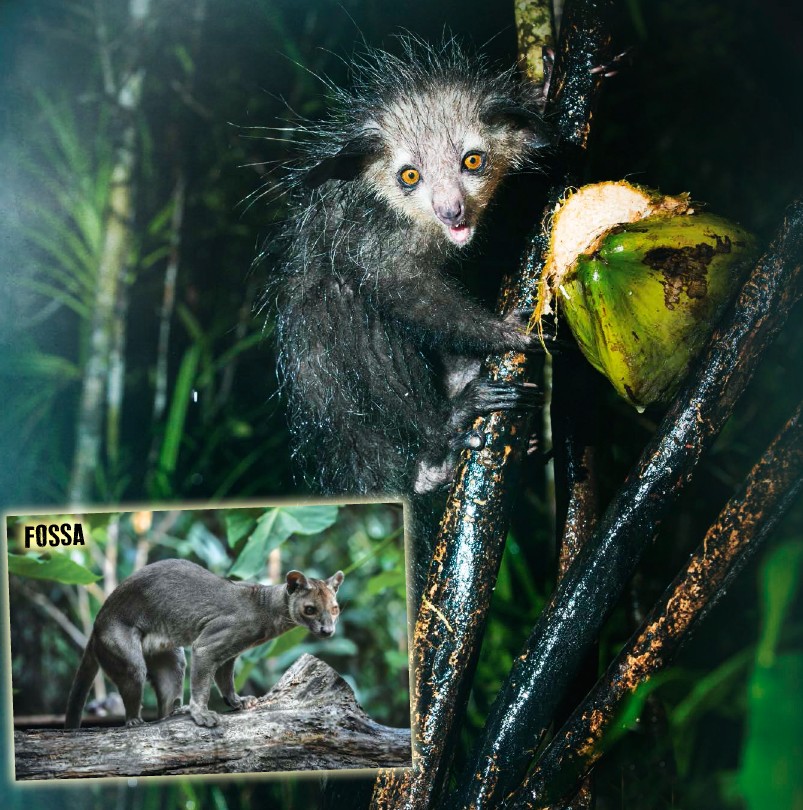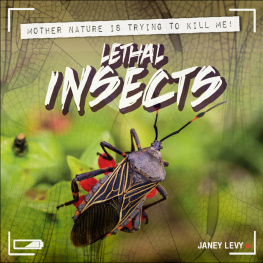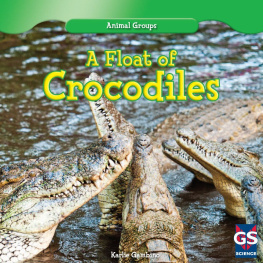 Please visit our website, www.garethstevens.com. For a free color catalog of all our high-quality books, call toll free 1-800-542-2595 or fax 1-877-542-2596.Cataloging-in-Publication Data Names: Levy, Janey. Title: The unsightly aye-aye / Janey Levy. Description: New York: Gareth Stevens Publishing, 2020. | Series: Natures freak show: ugly beasts | Includes glossary and index. Identifiers: ISBN 9781538246221 (pbk.) | ISBN 9781538246245 (library bound) | ISBN 9781538246238 (6 pack) Subjects: LCSH: Lemur (Genus)--Juvenile literature.
Please visit our website, www.garethstevens.com. For a free color catalog of all our high-quality books, call toll free 1-800-542-2595 or fax 1-877-542-2596.Cataloging-in-Publication Data Names: Levy, Janey. Title: The unsightly aye-aye / Janey Levy. Description: New York: Gareth Stevens Publishing, 2020. | Series: Natures freak show: ugly beasts | Includes glossary and index. Identifiers: ISBN 9781538246221 (pbk.) | ISBN 9781538246245 (library bound) | ISBN 9781538246238 (6 pack) Subjects: LCSH: Lemur (Genus)--Juvenile literature.
Classification: LCC QL737.P95 L48 2020 | DDC 599.83--dc23 First Edition Published in 2020 by Gareth Stevens Publishing 111 East 14th Street, Suite 349 New York, NY 10003 Copyright 2020 Gareth Stevens Publishing Designer: Katelyn E. Reynolds Editor: Monika Davies Photo credits: Cover, p. Rob Cousins/Bristol Zoo via Getty Images. All rights reserved. No part of this book may be reproduced in any form without permission in writing from the publisher, except by a reviewer. Printed in the United States of America Some of the images in this book illustrate individuals who are models.
The depictions do not imply actual situations or events. CPSIA compliance information: Batch #CW20GS: For further information contact Gareth Stevens, New York, New York at 1-800-542-2595.
CONTENTS W ords in the glossary appear in bold type the first time they are used in the text.
SAY HI TO THE AYE-AYE Do you know what a primate is? Its any animal from the group that includes humans, apes, and monkeys. The aye-aye (EYE-EYE) is a primate, but its hard to tell the aye-aye is a primate based on its looks. In fact, this primate looks so strange it was first believed to be a rodent, like a mouse or rat! The aye-ayes appearance and the way it lives make it one of the most unusual primates around.
Inside this book, youll learn all about this surprising animal. STRANGE BUT TRUE! Aye-ayes have a rodent-like face and a tail like a squirrel, which is another familiar rodent.  THE AYE-AYES SCIENTIFIC NAME IS DAUBENTONIA MADAGASCARIENSIS . ITS A LOT EASIER TO SAY AYE-AYE!
THE AYE-AYES SCIENTIFIC NAME IS DAUBENTONIA MADAGASCARIENSIS . ITS A LOT EASIER TO SAY AYE-AYE!
STRANGE APPEARANCE If you look at an aye-aye, youll instantly see how strange it looks. The aye-ayes pale, rodent-like face stands out against its dark body and long, bushy tail. Huge black ears rise above its pale face, and the aye-ayes bright, yellowish-orange eyes shine.
The aye-ayes front teeth grow continuously, just like those of a rodent. Aye-ayes also have large, strange-looking hands. Each finger has a long, curved claw. Their third finger is extra-long and so thin it looks like its just skin and bones! STRANGE BUT TRUE! Aye-ayes have big toes that act like thumbs. Using their big toes, theyre able to hold onto branches with their feet and hang upside down.
SURPRISING ADAPTATIONS Aye-ayes dont look unusual just to look unusual.
SURPRISING ADAPTATIONS Aye-ayes dont look unusual just to look unusual.
Their strange features are so they can move around without being spotted. Aye-ayes have big eyes which help them see in the dark. They also have a special at the back of their eyes. This special layer is called the tapetum lucidum, and it reflects, or gives back, light. The tapetum lucidum is what gives aye-ayes their excellent night vision, or eyesight. STRANGE BUT TRUE! Aye-ayes use their front teeth to gnaw bark and their hard food.
This gnawing action wears down their teeth. If their teeth didnt keep growing, theyd wear away!  THE TAPETUM LUCIDUM IS WHAT MAKES THE AYE-AYES EYES GLOW IN THE DARK. DOGS AND CATS HAVE THE SAME LAYER IN THEIR EYES.
THE TAPETUM LUCIDUM IS WHAT MAKES THE AYE-AYES EYES GLOW IN THE DARK. DOGS AND CATS HAVE THE SAME LAYER IN THEIR EYES.
FINGER FOOD Aye-ayes eat mostly bug larvae. They use their extra-long middle finger, teeth, and big ears to find and eat larvae. Aye-ayes use their middle finger to tap quickly on tree branches where the larvae live.
When their big ears hear a hollow sound, this means theres a larva tunnel inside. They then use their teeth to bite a hole in the branch. Next, the aye-ayes stick their third finger into the tunnel and pull out the larva. And, they have a tasty treat! STRANGE BUT TRUE! Aye-ayes also eat fruits, nectar, nuts, and seeds. They use their teeth to break open nuts and hard fruit coverings.  THE AYE-AYES BIG HANDS HELP IT HOLD SECURELY ONTO A TREE BRANCH WITH ONE HAND WHILE IT HUNTS FOR FOOD WITH THE OTHER HAND.
THE AYE-AYES BIG HANDS HELP IT HOLD SECURELY ONTO A TREE BRANCH WITH ONE HAND WHILE IT HUNTS FOR FOOD WITH THE OTHER HAND.
AYE-AYES ISLAND HOME If you want to see aye-ayes in the wild, youll likely have to travel to the other side of the world.
AYE-AYES ISLAND HOME If you want to see aye-ayes in the wild, youll likely have to travel to the other side of the world.
Theyre only found on the island of Madagascar, which is off the southeastern coast of Africa. Madagascar is about 250 miles (400 km) from the African . The islands animals, including aye-ayes, are quite different from the animals of Africa. Many aye-ayes live in the along the eastern coast of Madagascar. Theyre also found in other areas of the island. STRANGE BUT TRUE! Aye-ayes belong to a group of primates called lemurs.
Madagascar has over 100 kinds of lemurs and 95 percent are in danger of dying out. Lemurs are only found on Madagascar.  AYE-AYES ARE ALSO FOUND IN FORESTS ALONG MADAGASCARS NORTHWESTERN COAST.
AYE-AYES ARE ALSO FOUND IN FORESTS ALONG MADAGASCARS NORTHWESTERN COAST.
LIFE AT THE TOP Aye-ayes spend most of their life high in trees, moving between the leafy branches that form the trees . They build ball-like nests in the forks of branches. This is where they sleep during the day.
Their nests are made of leaves and small branches and have a single opening. Each nest is usually home to just one aye-aye. Aye-ayes are animals that hardly spend time together. They usually only meet up to mate. Female aye-ayes raise their young, but otherwise stay alone too. STRANGE BUT TRUE! Aye-ayes eat, sleep, travel, and mate in the trees.
Its fairly uncommon to see an aye-aye out of a tree, though they have been spotted on the ground!  LIVING HIGH IN TREES HELPS KEEP AYE-AYES SAFE FROM PREDATORS. THEIR MAIN PREDATOR IS THE FOSSA, A POWERFUL, CATLIKE ANIMAL.
LIVING HIGH IN TREES HELPS KEEP AYE-AYES SAFE FROM PREDATORS. THEIR MAIN PREDATOR IS THE FOSSA, A POWERFUL, CATLIKE ANIMAL.
MATES AND MOTHERS Female aye-ayes are in charge when it comes to mating and raising young. When a female is ready to mate, she makes calls to draw males to her. She usually mates with more than one male. After mating, aye-ayes return to their solitary lives.
The female has a single baby about 5 to 6 months later. She raises her baby alone. She nurses, or gives milk to, her baby for about 7 months, and the baby stays with her for up to 2 years. STRANGE BUT TRUE! Baby aye-ayes start to play with their mother when theyre around 2 months old. They jump, chase, and run along branches.
SOUNDS AND SCENTS Although aye-ayes are mostly solitary animals, they do have ways to with each other.
SOUNDS AND SCENTS Although aye-ayes are mostly solitary animals, they do have ways to with each other.
One way they communicate is through sounds. Baby aye-ayes call to their mother when theyre apart. Aye-ayes also make calls when theres danger or theyre fighting. In addition, aye-ayes communicate by marking their territory with their scent. They may rub their cheek, chest, or rear end along an object to leave their scent on it. Sometimeslike dogsthey pee on an object to mark it.


















 Please visit our website, www.garethstevens.com. For a free color catalog of all our high-quality books, call toll free 1-800-542-2595 or fax 1-877-542-2596.Cataloging-in-Publication Data Names: Levy, Janey. Title: The unsightly aye-aye / Janey Levy. Description: New York: Gareth Stevens Publishing, 2020. | Series: Natures freak show: ugly beasts | Includes glossary and index. Identifiers: ISBN 9781538246221 (pbk.) | ISBN 9781538246245 (library bound) | ISBN 9781538246238 (6 pack) Subjects: LCSH: Lemur (Genus)--Juvenile literature.
Please visit our website, www.garethstevens.com. For a free color catalog of all our high-quality books, call toll free 1-800-542-2595 or fax 1-877-542-2596.Cataloging-in-Publication Data Names: Levy, Janey. Title: The unsightly aye-aye / Janey Levy. Description: New York: Gareth Stevens Publishing, 2020. | Series: Natures freak show: ugly beasts | Includes glossary and index. Identifiers: ISBN 9781538246221 (pbk.) | ISBN 9781538246245 (library bound) | ISBN 9781538246238 (6 pack) Subjects: LCSH: Lemur (Genus)--Juvenile literature. THE AYE-AYES SCIENTIFIC NAME IS DAUBENTONIA MADAGASCARIENSIS . ITS A LOT EASIER TO SAY AYE-AYE!
THE AYE-AYES SCIENTIFIC NAME IS DAUBENTONIA MADAGASCARIENSIS . ITS A LOT EASIER TO SAY AYE-AYE! THE TAPETUM LUCIDUM IS WHAT MAKES THE AYE-AYES EYES GLOW IN THE DARK. DOGS AND CATS HAVE THE SAME LAYER IN THEIR EYES.
THE TAPETUM LUCIDUM IS WHAT MAKES THE AYE-AYES EYES GLOW IN THE DARK. DOGS AND CATS HAVE THE SAME LAYER IN THEIR EYES. THE AYE-AYES BIG HANDS HELP IT HOLD SECURELY ONTO A TREE BRANCH WITH ONE HAND WHILE IT HUNTS FOR FOOD WITH THE OTHER HAND.
THE AYE-AYES BIG HANDS HELP IT HOLD SECURELY ONTO A TREE BRANCH WITH ONE HAND WHILE IT HUNTS FOR FOOD WITH THE OTHER HAND. AYE-AYES ARE ALSO FOUND IN FORESTS ALONG MADAGASCARS NORTHWESTERN COAST.
AYE-AYES ARE ALSO FOUND IN FORESTS ALONG MADAGASCARS NORTHWESTERN COAST. LIVING HIGH IN TREES HELPS KEEP AYE-AYES SAFE FROM PREDATORS. THEIR MAIN PREDATOR IS THE FOSSA, A POWERFUL, CATLIKE ANIMAL.
LIVING HIGH IN TREES HELPS KEEP AYE-AYES SAFE FROM PREDATORS. THEIR MAIN PREDATOR IS THE FOSSA, A POWERFUL, CATLIKE ANIMAL.